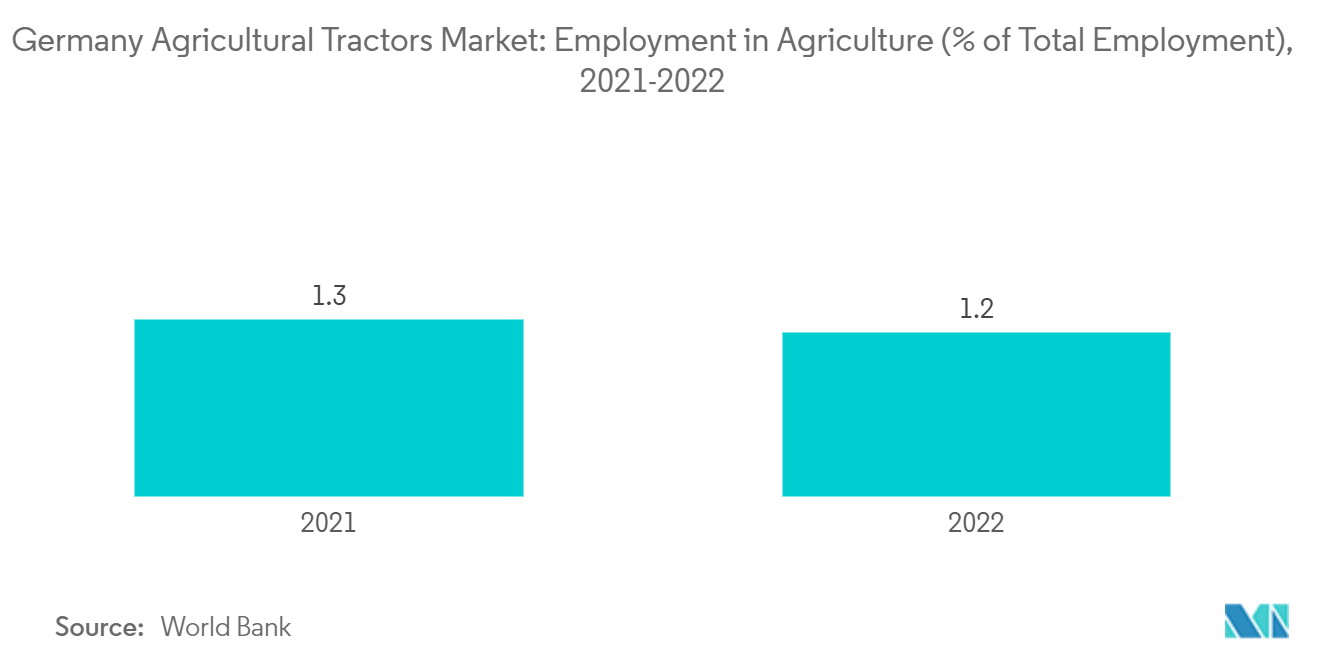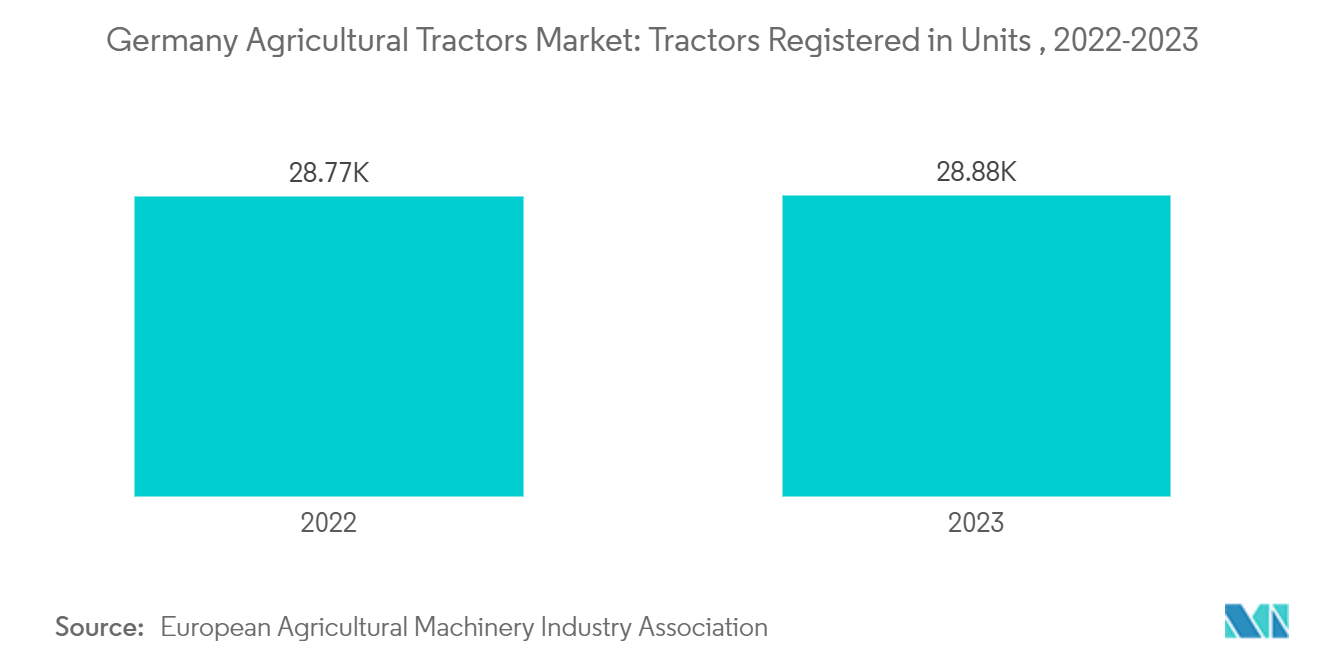Market Trends of Germany Agricultural Tractor Industry
Labor Shortage in Agriculture Fuels Tractor Demand in Germany
- In Germany, a shortage of farm labor is driving up the demand for tractors. This trend mirrors a global movement, where rising wages and urban migration push farmers towards mechanization. As rural populations dwindle and urban migration quickens, the agricultural labor force shrinks. For example, World Bank data shows that in Germany, the share of total employment in agriculture dropped from 1.3% in 2021 to 1.2% in 2022. In light of this, farmers are increasingly adopting tractors and machinery, aiming to sustain or boost productivity while leaning less on human labor.
- Modern tractors and farm equipment empower farmers to boost productivity and cut down on operational time. Confronted with erratic weather patterns and intensifying competition, German farmers are turning to tractors to secure higher yields with less labor. As the global spotlight shifts to precision agriculture—leveraging data and technology to refine farming practices—there's a surge in demand for advanced tractors. This evolution aligns seamlessly with Germany's broader ambition to modernize its agricultural sector, also ensuring the sustainability of their agricultural yields.

51 - 100 HP Tractor Market Sees Steady Growth
- Responding to the changing needs of German agriculture and broader economic shifts, the market for 51 to 100 HP tractors in Germany is on an upward trajectory. These tractors efficiently manage a range of agricultural tasks, from plowing to seeding, thereby significantly minimizing the reliance on extensive manpower. German agriculture, largely dominated by small and medium-sized farms, typically features smaller fields. These smaller fields don't necessitate the power of larger tractors, making the 51 to 100 HP range an ideal choice. These tractors provide sufficient power for daily tasks while remaining compact and agile for the country's smaller, fragmented plots.
- The 51 to 100 HP tractors' versatility allows them to plow, till, spray, and transport goods. This multifunctionality is vital for small to medium farms that rely on a single machine for various tasks. Additionally, these tractors are more affordable than their larger counterparts, both at the time of purchase and in ongoing operational costs. This cost-effectiveness strikes a balance, especially for budget-sensitive small to medium-sized farms.
- Fuel efficiency stands out as a key feature of these tractors, often surpassing that of larger models. For farmers aiming to reduce operational costs, this attribute is crucial. Given the unpredictability of fuel prices, there's a strong focus on machines that perform essential tasks without excessive fuel consumption. Such considerations have driven an increase in tractor registrations.
- The data from the European Agricultural Machinery Association shows tractor registrations in Germany rose from 28,769 units in 2022 to 28,881 units in 2023. German farms, renowned for high-value specialty crops such as fruits, vegetables, olives, and nuts, demand precision farming techniques. These crops flourish in smaller, often irregularly shaped fields or orchards. The compact yet powerful 51 to 100 HP tractors are perfectly tailored for these settings.


